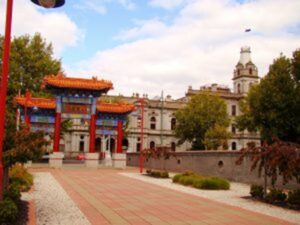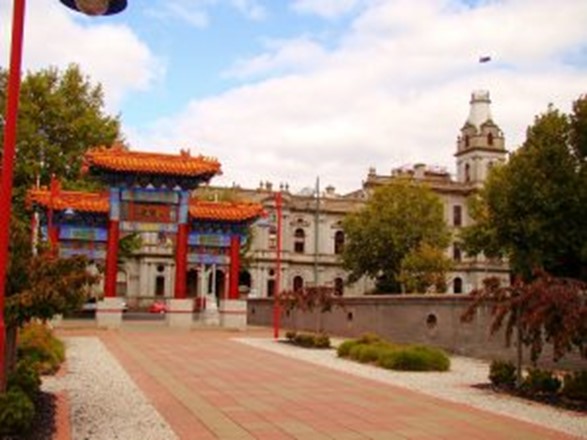The Chinese Diaspora
As the most populous country in the world, it is of little surprise that China has one of the largest diasporas on the planet. It is estimated that there are 50 million Chinese people living overseas with 100 million of Chinese descent. The countries with the highest Chinese populations are Thailand (10.3 million), Malaysia (6.6 million), the United States of America (5 million), Indonesia (2.8 million), Singapore (2.6 million), Canada (1.8 million), South Korea (1.6 million), Myanmar (1.6 million), the Philippines (1.3 million) and Australia (1.2 million). Given the cultural diversity within China itself, many of these Chinese communities abroad differ significantly from one another.
The Chinese history of international migration stretches back hundreds of years to as early as the Qing Dynasty period in the 14th Century as the emperor dispatched expeditions into the surrounding regions in the South China Sea to bolster trade and political influence. The advent of seafaring trade saw population mobility increase significantly. Migration within China had been commonplace for centuries, but isolationist political policies meant that foreign expeditions were kept to a minimum. It wasn’t until the reign of the Yongle emperor in the 15th Century when a dramatic upsurge in foreign expeditions occurred. These were dispatched as far as the East African Coast and the Persian Gulf.
As trade opened up between Europe and Asia more extensively, China interacted with foreign countries more significantly.
Early emigration initially occurred in countries such as Cambodia and other countries in Southeast Asian countries. Chinese emigration to Southeast Asia outnumbered other countries by a significant margin during the first half of the 19h Century. Chinese migration overseas soon expanded far beyond the reaches of its nearest neighbours in Southeast Asia and towards Western nations in the throes of industrialisation. Many Western European countries as well as emerging nations such as Australia and the United States, attracted significant swathes of Chinese migrants looking for work.

New York – China Town, Bartwatching, Flickr Creative Commons
The history of the Chinese diaspora in the United States is long and complex. Despite Chinese contact with North America occurring as early as the 16th Century, there was not significant immigration until mid-way through the 19th Century. Two major factors motivated the upsurge in immigration to the United States-the construction of the First Transcontinental Railroad and the Californian Gold Rush. Subsequently, many Chinese immigrants settled on the country’s West Coast, where major populations remain today, especially in the cities of San Francisco and Los Angeles. Additional factors included internal discord within China.
Initial Chinese immigrants to the United States dealt with considerable culture shock and found assimilation to be highly challenging. In addition to language difficulties, they encountered considerable racism and persecution by European Americans. This animosity intensified significantly over the latter half of the 19th Century as Chinese workers became more prevalent throughout American industries. This animosity developed into a full-fledged anti-Chinese movement aimed at reducing Chinese immigration to the United States. This culminated with the 1882 Chinese Exclusion Act, which put an end to Chinese immigration to the country and saw other Asian immigrants (mainly Japanese) arrive in the United States to fill the labour vacuum.
The Chinese community became increasingly isolated and encountered difficulty in assimilating into American life, which led to the formation of a number of ‘Chinatown’ communities throughout the country. Tensions remained high until the aftermath of the Second World War when a diplomatic alliance between the United States and China ended many of the racist policies against the Chinese. This encouraged a second wave of immigration. The final major wave of Chinese immigration occurred in the 1980’s following political discord in China. In addition to political exiles, many students began arriving in the United States due to the educational prestige of American universities. Major Chinese American communities in modern times can be found in most major American cities, the largest of which is New York City (560,000). San Francisco (180,000), Los Angeles (77,000), San Jose (75,000) and Chicago (52,000) also have significant Chinese populations.
The Chinese diaspora, outside of Southeast Asia, is visible throughout most of the world. Other countries such as Australia and Canada experienced similar patterns of Chinese immigration to the United States, albeit in much lower numbers. The experience of Chinese immigrants in both countries was met with similar hostilities. The Chinese Canadian population was met racist treatment since the beginning. Taxation was imposed on Chinese immigrants entering the country and restrictions were implemented with the Chinese Immigration Act of 1923. Following the Second World War, tensions re-emerged as Chinese immigration increased. The escalation of tensions in the Cold War saw Chinese conflated Communism, which intensified prejudicial relations. In the 21st Century, the population is much better-integrated and the government has officially apologised for its racist policies.
Chinese immigration to Australia is deeply rooted in racism. Extending back several centuries to the early days of European settlement, Chinese immigrants were drawn to Australia by the wide-ranging labor opportunities particularly during the gold rush. The massive influx of Chinese labourers created a sense of panic amount European politicians and labourers, who shunned the growing Chinese population.

Bendigo Chinese Museum, Victoria, Australia raider of gin, Flickr Creative Commons
Their treatment was appalling and culminated in the White Australia policy, which caused significant alienation amongst the considerable Chinese population. It was not until the late 20th Century when the Chinese Australian population began to recover and immigration increased again.
The Chinese diaspora is one of the most visible in the world, leaving a cultural imprint throughout the world. Despite the lengthy and brutal mistreatment endured by Chinese immigrants across the world, the cultural impact they have left throughout the world is hugely significant.




